In this guide, I will show you how to create a WooCommerce product feed for Wish.com.
Step 1: Create a New Feed and Map Your Product Attributes #
Go to your product feed dashboard.
Click on the Add New Feed button.
It will take you to the feed creation page.
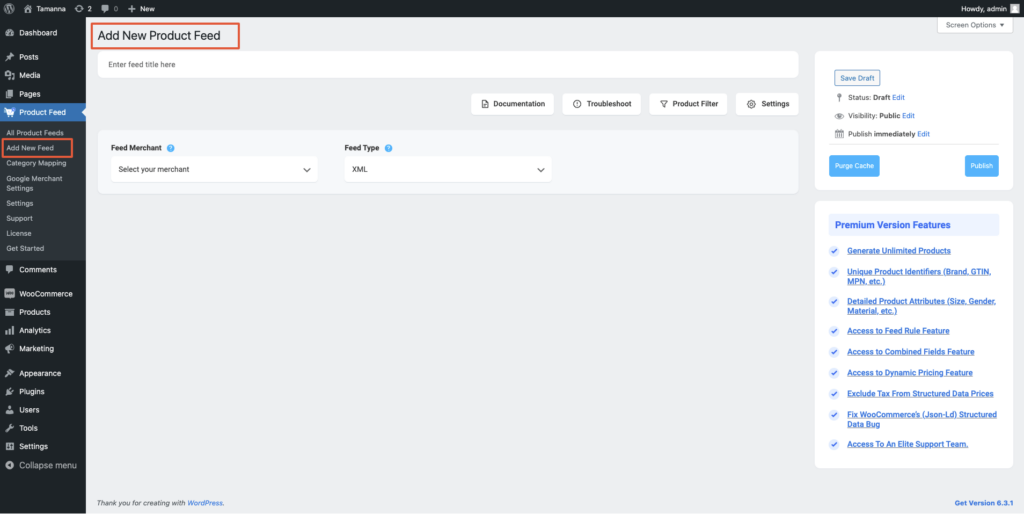
Now, here,
1. On top, you will get the option to add a title to the feed. Give your feed a name.
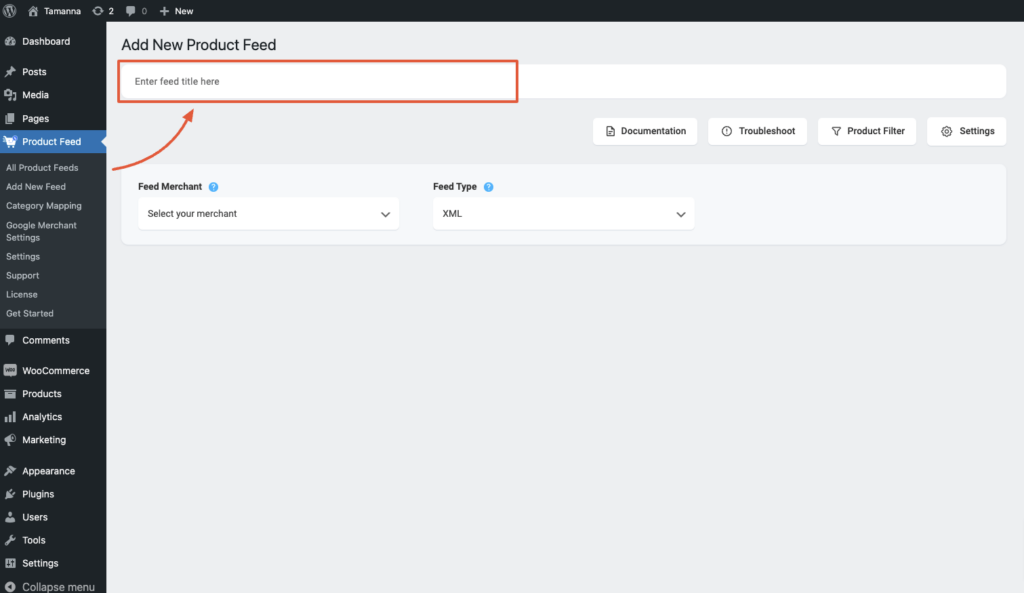
2. Just under the title, you will see an option to select your preferred merchant. Simply click on the Feed Merchant dropdown button and select your preferred merchant from the dropdown or you can search in the dropdown box.
Select your preferred merchant and all the required attributes will be loaded below.
Select Wish.com from the dropdown list.

**Please note that Wish.com only accepts CSV feed file submissions. So you cannot change the feed format type from the Feed Type dropdown.
3. You can see that some of the attributes are already configured – their values are assigned properly, You can change the assigned values as per your need or you can keep them as it is.
De rest van de attribuutwaarden moet u echter handmatig toewijzen.
For Wish.com, you need to assign values for the following attributes:
**Please note that Wish.com only accepts CSV feed file submissions. So you cannot change the feed format type from the Feed Type dropdown.
3. You can see that some of the attributes are already configured – their values are assigned properly, You can change the assigned values as per your need or you can keep them as it is.
De rest van de attribuutwaarden moet u echter handmatig toewijzen.
For Wish.com, you need to assign values for the following attributes:
- Currency Code
This is your local currency code – the currency you have used for all of your products.
This must match your assigned currency.
Examples:
- Acceptable: USD
- Acceptable: CNY
- Unacceptable: Chinese
- Default Shipping Price
This is the default shipping price of your product. This will automatically apply as the shipping price for any new or unset countries in this warehouse.
Examples:
- Acceptable: 100.99
- Acceptable: 10.99
- Unacceptable: 49.99 + S/H
- Inventory
This is the amount of an SKU that is in stock.
Examples:
- Acceptable: 1200
- Acceptable: 0
- Acceptable: 4
- Unacceptable: In-stock
- Unacceptable: Out of Stock
- Warehouse
Here, you need to provide the unique warehouse name that you use internally to identify a warehouse. Shipping price and the inventory are applied to the specified warehouse only.
If you do not define one, they are applied to the default warehouse attached to your account.
Examples:
- Acceptable: US_94132
- Acceptable: SZ_CN
- Unacceptable: 2
- Unacceptable: a
Step 2: Feed Configuration #
1. Scroll up to the top and here, you will see that there are two options, Product Filter and Product Settings.
- Producten Instellingen
- Product Filter
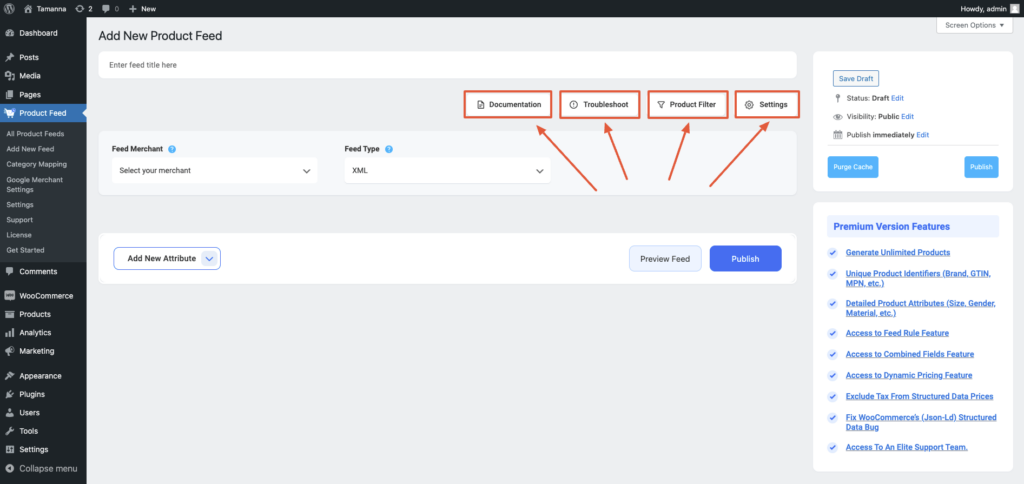
2. First, let us configure the features in the Product Settings. Click on the Product Settings button, and a drawer will open from the right side of the screen.
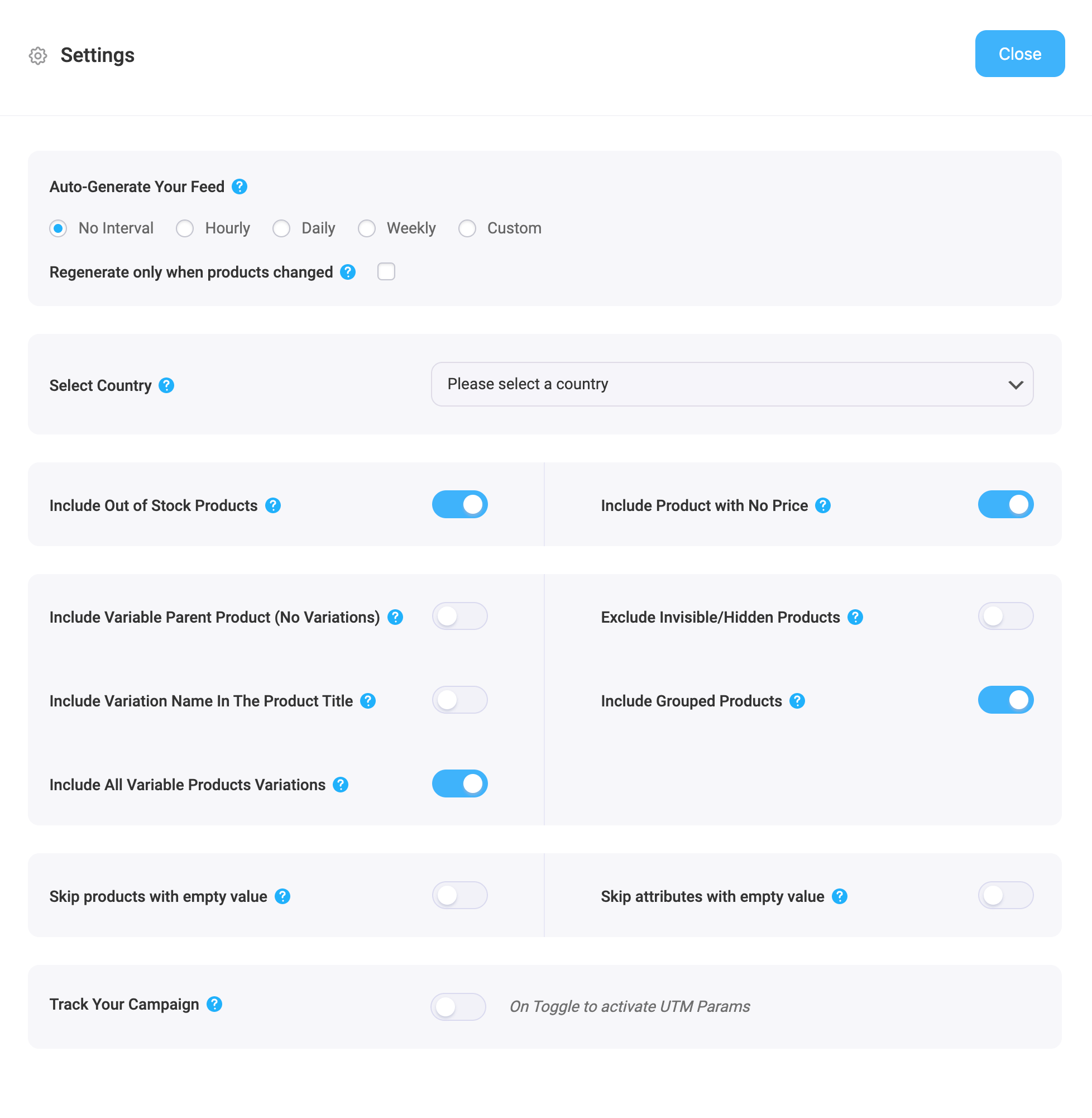
3. De eerste optie die je ziet is Automatisch je feed genereren.
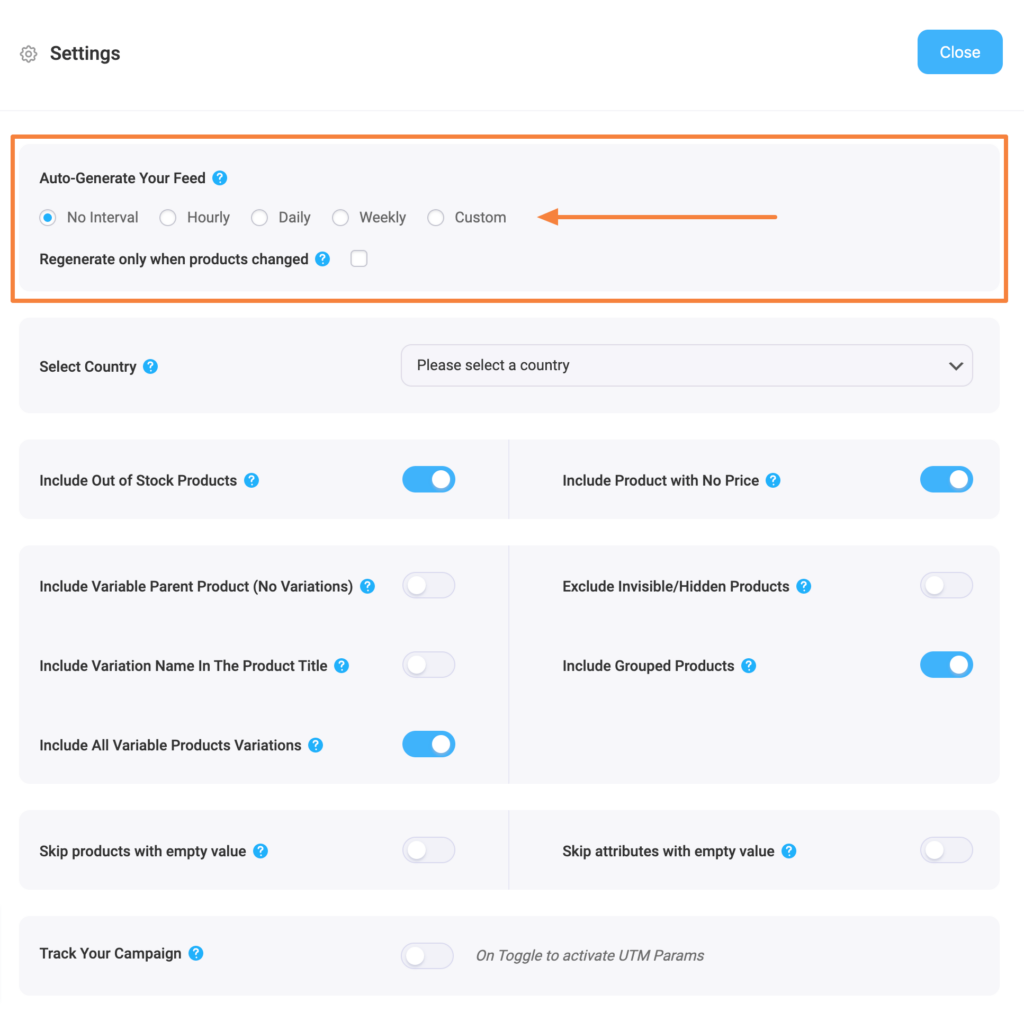
Deze optie wordt gebruikt om een automatische update van de feed te plannen na bepaalde intervallen. Kies een optie om een auto-update in te stellen of laat het staan op "Geen interval" als je geen auto-update van de feed wilt instellen.
4. Gebruik vervolgens indien nodig de volgende opties.
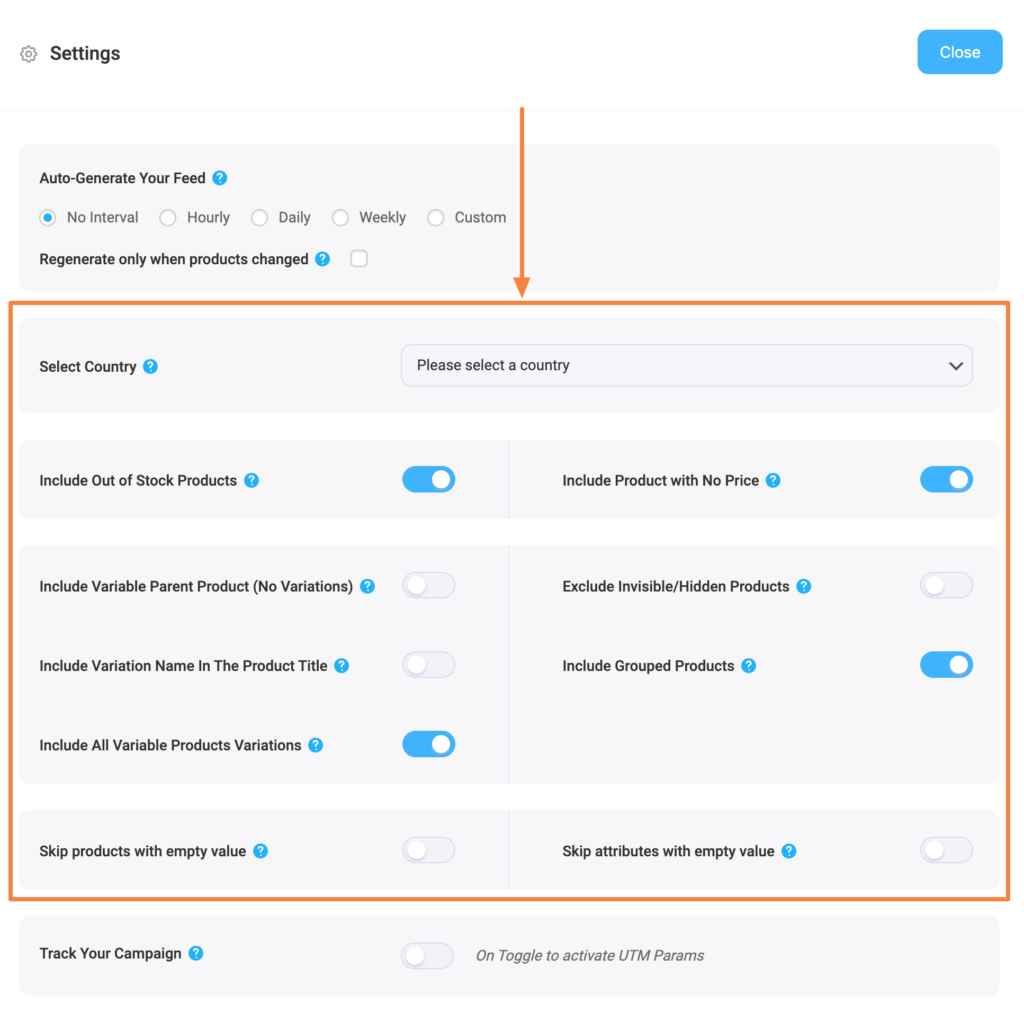
- Selecteer land/regio
- Selecteer een regio uit dit vervolgkeuzemenu als je de verzendgegevens in je feed wilt opnemen. Zodra je de regio hebt geselecteerd, moet je het kenmerk Verzenden aan je feed toevoegen om de waarden voor Verzenden te krijgen.
- U kunt dit document volgen om te leren hoe u de verzendinformatie in uw feed kunt opnemen.
- Include Out of Stock Products
-If you want to include the out-of-stock products, then you can enable the option.
-For this feed, let’s not use this option and keep its value as “No“. - Include Variable Parent Product (Without Variations)
-If you want to include the parent feed for variable products, then you can enable the option.
-Few merchants such as Google Shopping or Facebook don’t require you to submit parent products, however, there are many other merchants such as eBay MIP, that require you to submit product products in the feed.
-For this feed, let’s not use this option and keep its value as “No“. - Include All Variable Products Variations -
-Als je alleen eenvoudige producten wilt opnemen in de feed en geen variabele producten, houd de waarde dan op "No".
-Als je zowel eenvoudige producten als variabele producten wilt indienen bij Google Shopping, houd de waarde dan op "Yes".
-Laten we deze functie gebruiken en markeren als "Yes", voor deze feed. - Include Variation Name In The Product Title
-Few merchants such as Google Shopping, suggest you add the variation term to the Product name in case you are uploading variable products, however, it is completely optional.
-So if you want to include the variant terms to the variable product names, then you can set its value as “Yes“.
-Let’s use this feature, and mark it as “Yes“, for this feed. - Inclusief gegroepeerde producten
-Als u gegroepeerde producten hebt, dan kunt u het beste het bovenliggende product van het gegroepeerde product dat u hebt gemaakt indienen.
-Dus moet u deze optie aanvinken met "Ja". - Exclude Invisible/Hidden Products
-You might have certain products on your store that are marked as hidden or invisible on WooCommerce.
-If you want to generate feed for Simple products only, then you can mark this option as “Yes” to exclude invisible products from the feed.
-However, product variants are by default marked as Invisible on WooCommerce. So if you include variable products to the feed, then you should mark this as “No“.
-Since in this feed we are including product variants, we will not use this feature and keep it as “No“. - Elk attribuut overslaan als de waarde leeg is
-Inschakelen van deze functie sluit alle attributen van een product uit als de waarde van het attribuut ontbreekt.
-Voor deze feed zullen we deze optie niet gebruiken en de waarde ervan op "Nee" houden.
5. At the bottom, you will find an option to Track Your Campaign (Analytics parameters).
Use this option if you wish to add analytics parameters to product links on your product feed so that you can keep track of the product’s performance.
6. Now, close the drawer and click on the Product Filter option. A new drawer will open from the right.
Bovenaan krijgt u de optie om het Aangepaste filter of de functie Feed Rules (PRO) te gebruiken.
En u krijgt de feed filteropties uit het Filter dropdown menu.
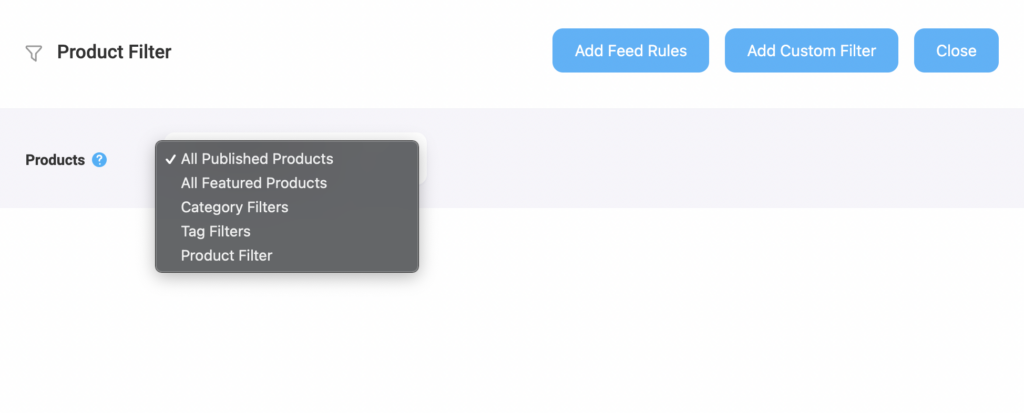
Choose the Products you want to include in the feed using any filter. “All Published Products” is selected by default
U kunt alle andere filteropties, Aangepast filter, Categoriefilter en Tagfilter, gebruiken om de producten die u nodig hebt op te nemen (of uit te sluiten die u niet wilt opnemen).
Voor een basisvoeding kun je het houden zoals het is.
Step 3: Publish WooCommerce Product Feed For Wish.com #
Now, that you’ve configured your feed, it is time to publish the feed.
Scroll terug naar boven, en u vindt rechts een knop Publiceren.
Klik op de knop Publiceren, uw feed wordt gegenereerd.
Zodra het genereren van uw feed voltooid is, kunt u de feed bekijken of downloaden.
That’s it. Your WooCommerce CSV product feed for Wish.com is generated.
Now, log in to the Wish.com marketplace, and there you will get the option to upload your feed file to list your items.





